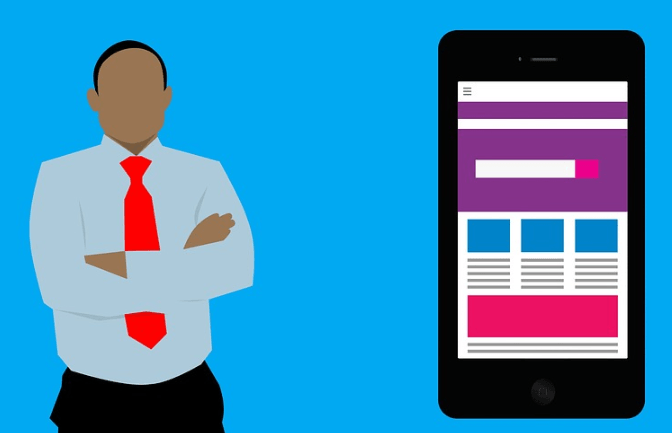It’s hard to remember a world without mobile phones.
They’ve made so much of our lives quicker, easier and simpler – by giving us access to almost everything at our fingertips.
Mobiles have become so ingrained in our lives that we actually spend 59% of our time on them.

With mobile-only traffic taking over desktops worldwide, it’s also the most likely way that your customers are going to find your business online.
So, if your website isn’t mobile-friendly, you’re alienating all of these users that find you this way. Rather than try and stumble their way through a website that doesn’t work properly, they’ll go somewhere else.
That means you’re losing out on potential customers – just because they’re on a mobile phone. With 79% of smartphone users making a purchase on their phone in the last 6 months – that’s a lot of sales you’re missing out on.
So. Let’s do something about it. Increase your conversions by making sure your website is mobile friendly. Here are the three biggest tips to get you started.
Make Sure It’s Responsive
Responsive websites adapt to whatever device you view it on.
They all include the same content and information. But, with flexible layouts and images, the way they’re displayed and arranged gets changed.
So, whether you’re looking at it on a huge desktop screen or a tiny mobile, it will always look great.
What’s more, responsive websites are also Google’s prefered format for mobile sites. So you’ll also be showing good SEO (Search Engine Optimisation) practices.
In addition, Google also uses mobile-first indexing. This means that preference will always be given to mobile friendly-websites in their search results.
Overall, these practices will help your website rank higher in search engines, getting more traffic to your site.
Use Mobile UX Design
To make your websites mobile friendly, it needs to be easy to use on mobile. Makes sense right?

User-experience (UX) design is key to great user experiences on your websites.
Here are a few things you can look at your website to ensure they use mobile UX design:
Use large buttons
Buttons are incredibly easy to click with a mouse. But when you’re using your fingers, it can be a little harder.
If you’ve got different buttons close to each other, it’s all too easy to hit the wrong one.
So, make your buttons bigger on mobile. Apple’s current guidelines are to make buttons at least 44px by 44px. If you’re hitting that, your website should be fine.
Use a bigger font size
For mobiles, it’s recommended using a font size of at least 14px.
Seems too big? Think about it for a moment. Your users are going to be reading this on a tiny, handheld device.
If you put small text on top of that, that means a lot of zooming in for your users to actually read the content. So, a bigger font size makes your writing more legible and a lot easier on your users.
Use high-resolution images
Mobiles are getting smarter and smarter. In fact, the latest iOS mobile screens have double the resolution of desktops.
This means that the images you use on your mobile website need to be high-resolution images. Otherwise, they’ll look blurry or pixelated on mobile.
Just make sure you compress these images, otherwise, your site will take all day to load. Which nicely brings us to our third tip, which is to…
Optimise your load times
Optimising your load time is incredibly important because people just aren’t prepared to wait anymore. In fact, 53% of people leave if your site takes more than 3 seconds to load.
So, it’s incredibly important that you compress your images and CSS on your websites. You really can’t afford to make your visitors wait.
With mobile phones getting smarter and more advanced, you really haven’t got an excuse for slow load times. Get it sorted – or your visitors will leave. It really is that simple.
Unsure? Call In Expert Help
It can be hard doing things yourself. Particularly if you’re using a DIY website builder like Wix.
Don’t get us wrong, these platforms are great for getting your website online quickly and easily. But you’ll be on your own and have no one there to stop you from making common mistakes.
Also, they’re designed for desktop, not mobile.
They might give you responsive options and the ability to see your website on mobile view, but they aren’t specifically designed for mobile. This is important, as 62% of companies that designed a mobile-specific website increased their sales.
If you’re getting a website made for you, make sure that they build and optimise for mobile.
Never Stop Testing Your Websites
What works now won’t always work for the future.
The key to success is to keep on testing what works – and making sure your websites are always optimised and provide the best user experiences.
Need a quick check of how mobile-friendly your website is? Google has their own Webmaster Tool to do exactly that.
Just enter your URL and click on analyze and you can get an overview of how your mobile website is doing – and what areas you need to start improving on.
Thanks to Google’s mobile-first based algorithm, making sure your website is mobile-friendly won’t just boost your conversions.
It will also help get you found in the first place – increasing your sales and profits.
Join 25,000+ smart readers—don’t miss out!







